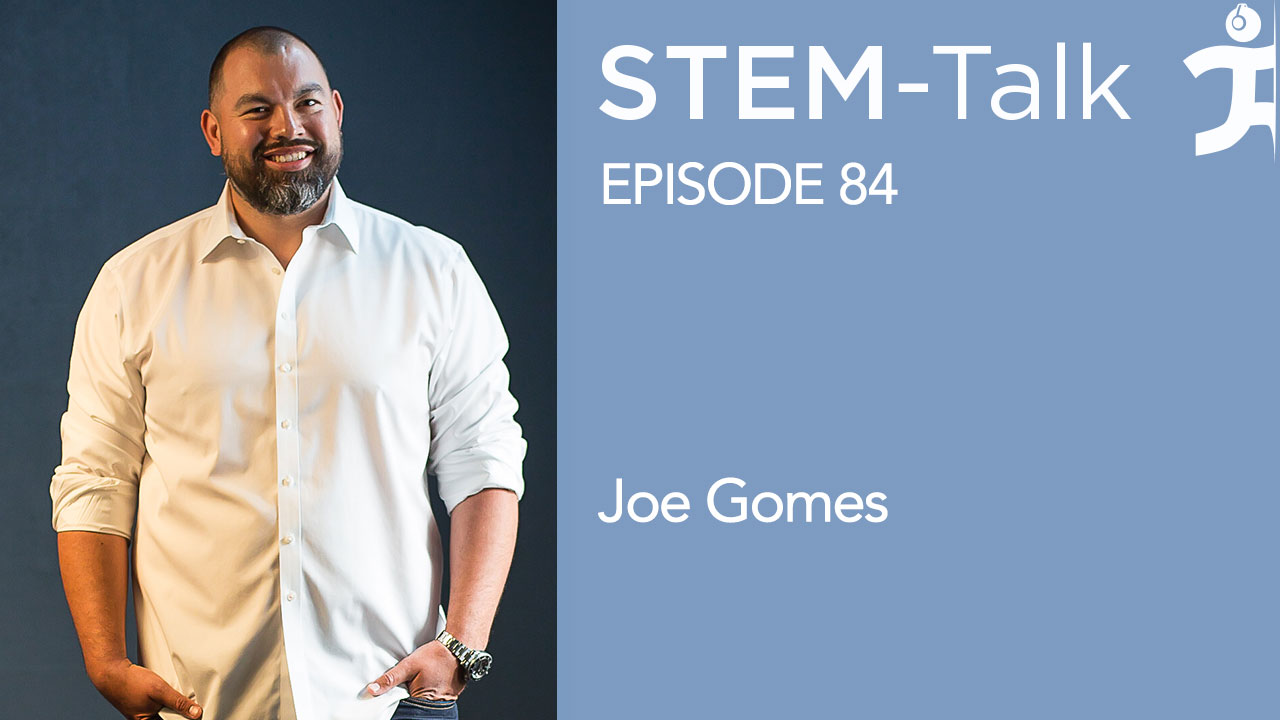STEM-Talk
Episode 84: Joe Gomes discusses optimizing human performance and resiliency in the NFL and elite warfighters
// Mar 5, 2019

Today’s guest is Joe Gomes, the former head strength and conditioning coach for the NFL’s Oakland Raiders, who today is IHMC’s new High Performance Director.
Joe came to IHMC a little more than a year ago to be part of a new biological team that is searching for innovative ways to extend the capabilities and resilience of high-performing humans who operate in extreme environments. In today’s interview, you’ll hear Joe talk about a number of projects he’s working on, including his work with IHMC’s engineers and NASA to develop an exercise machine for long-duration space missions.
Joe was with the Raiders for the 2016 season when Oakland won 12 games and went to the playoffs for the first time in 14 years. Although Joe has spent most of his career helping professional and amateur athletes, he also spent five years in North Carolina as a senior advisor and performance director for the United States Army Special Operations Command.
Show notes:
[00:03:43] Ken asks about Joe’s childhood and whether he played a lot of sports growing up. [00:04:14] Joe talks about being drawn to rugby because of the teamwork that’s involved. [00:05:27] Joe describes how he and a friend decided to take some time off from school and travel to Australia. [00:06:41] Joe discusses returning to London to go to back to school and major in sports science and rehabilitation. [00:07:37] Ken mentions that even as a young man Joe was very interested in the science of how the human body worked, and asks Joes how it came about that he started to question some of the basic training techniques offered by coaches. [00:08:40] Joe talks about working with John Allen, a physiotherapist who worked with the British track and field team, where he helped Allen set up a hydrotherapy program to assist injured athletes. He goes on to talk about how he also became involved in a program to screen elite athletes who were potential Olympic medalists. [00:11:36] Joe explains how he became interested in strength and conditioning. [00:12:52] Ken asks how a sports-medicine conference in Las Vegas led to Joe moving from London to Phoenix Arizona. [00:14:47] Joe tells of how he began working with the Argentinian national rugby team back in 2007. [00:16:36] Joe explains how his experience with the Argentinian rugby team helped him better understand that in addition to physical training, instilling a winning mindset is also important to get the best performance from athletes. [00:18:36] Joe talks about his passion for teaching athletes about self-accountability. [00:19:44] Ken asks Joe to talk about his biggest takeaways in terms of optimizing athletes’ performance after working with the Argentinian ruby team. [00:20:43] Joe gives an account of “his own world tour,” where he hopped around working with different national teams and governing bodies for three years after his experience with the Argentinians. [00:22:01] Ken asks for Joe to describe his time running the NFL annual scouting combine, where Joe helped train 35 first-round draft picks in a three-year period while working for EXOS as the director of performance. [00:24:16] Ken comments on how the NFL combine seems quite artificial, focused heavily on explosive power and strength. He notes that much of the training for the combine is designed to stiffen the tendons of the athletes for better power and strength transfer. He goes on to ask if this has resulted in the tendons being stiffer than the muscles are strong, and if there has been a higher injury rate in athletes who have attended the combine training. If so, Ken asks, does it come down to how their team handled them after the combine at the start of training camp. [00:26:54] Joe discusses how he came to work for the U.S. Army Special Operations Command at Fort Bragg. [00:28:13] Ken explains how impressed he was by the good work Joe was doing in facilitating the performance, and also preserving the health, of elite warfighters at Fort Bragg. Ken then asks about the similarities and differences between the training for the NFL as opposed to tier-1 military units. [00:30:13] Joe describes the work he did at Fort Bragg as the most important work of his career. [00:32:38] Joe tells the story of how he came to work with the Oakland Raiders. [00:33:44] After arriving in Oakland, Joe helped to plan and open a new state-of-the-art training facility for the Raiders. Ken asks what the process was like and what a state-of-the-art NFL training facility entails. [00:35:48] Ken asks Joe about the need for a personalized approach to optimize an NFL player’s performance. [00:37:53] With injuries in the NFL, and sports in general, being a common occurrence, Joe discusses how he uses technology and science to implement strategies for mitigating the risk of injury. [00:39:23] Ken asks whether coaches and staff fully appreciate the importance of good nutrition and exercise for their own health. [00:40:31] Joe discusses recommendations and strategies for the preservation of strength and muscle mass, both for athletes and everyday people. [00:42:48] Joe talks about the importance of sleep. He points out that even though we can all have bad nights where we don’t get optimal rest, people should keep a week to week “rolling total” number of hours of sleep. [00:44:01] Ken mentions that while working with the NFL, Joe spent a lot of time ensuring that travel didn’t negatively impact players’ performance. Joe explains his methodology for mitigating jet lag in players. [00:46:14] Joe discusses what high performers consistently do, and also lists some of the common hindrances and pitfalls of progress. [00:47:23] Joe explains the metrics used in determining the success of an intervention. [00:48:48] Ken comments on how technology today allows everyone to collect a massive amount of data about themselves. He goes on to ask, for those individuals who want to keep things simple and collect a minimal amount of data, what are the key fundamental metrics of health and performance that a person needs to track. [00:51:14] In regards to heart-rate variability (HRV), Ken asks if its utility is confined to individuals, or can HRV data be meaningfully interpreted across people. [00:52:12] Ken asks if the countermeasures to increase HRV, implemented in many elite sports, is like simply treating a symptom rather than looking into the underlying causes behind the HRV readings. [00:54:05] Joe discusses how the advice for people training for marathons has changed over the years, from just going on long runs, to the advice now given on implementing short, high-intensity workouts. [00:55:50] Joe mentions some lessons learned with working with elite athletes that can be incorporated into the lives of everyday individuals. [00:56:38] Ken asks Joe to explain why he came work at IHMC. [00:57:49] In regards to the exercise machine being developed at IHMC in collaboration with NASA for long-duration space missions, Joe talks about potential commercial applications of this device here on Earth. [00:59:36] Ken talks about blood flow restriction training, which was the topic of episode 34 of STEM-Talk, and points out that the training has benefited the elite populations of both special-operations forces and athletes. He then asks if there are any carryover applications for the general population. [01:00:54] Joe talks about his daily training regimen, diet and sleep schedule. [01:02:15] Joe ends the interview talking about how he and his family have enjoyed the transition to Pensacola.Links:






